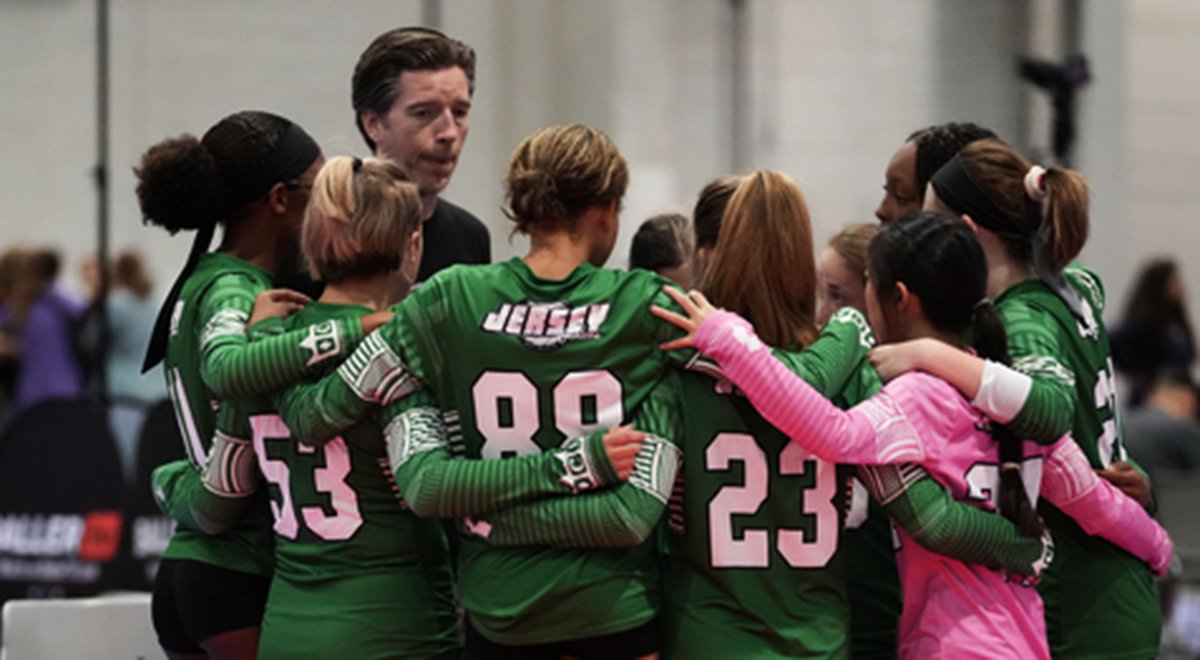
If you have a diverse group of student athletes, you may be wondering how to best support all of them at the same time in an increasingly complex social environment. These days, coaches are often expected to understand a huge variety of athlete experiences and use those experiences to help their athletes and sport program flourish.
José Miguel Burgos, head coach of the boys and girls soccer program and Spanish teacher at Catalyst Maria High School, runs an incredibly diverse program there. Burgos is also the inaugural winner of TrueSport and SportsEngine’s Champion Coach Recognition Program in 2019. His secret to success? Love. And a few other things. Here are his tips for supporting a diverse program.
Love
If you begin by truly loving the players on your team and the sport itself, your team will flourish. Most importantly, focus on loving the athletes simply because they are human beings. “Many of us work in communities where there’s terrible injustice, and the only way that I have been able to combat that is with love, compassion, and kindness,” Burgos says.
“Your athletes need to know that win or lose, you love them. This generation of humans might be one of the best that we have produced and it’s our job to make sure that they realize that.”
Authenticity
Artificial efforts to show cultural acceptance, such as blasting loud rap music or adopting trendy lingo, aren’t going to endear you to the athletes on your team. You might think that you’re helping create a multi-cultural environment by doing so, but Burgos says that kids are capable of sniffing out insincerity. “Music is a great training tool: If you play the right beat at the right time, athletes are going to fly,” Burgos says. “But it’s not as simple as that. Picking great music that the kids respond to, or letting them pick it, is one step, but you cannot fool kids into thinking you care about them if you don’t.”
Understanding
Remember, diversity includes income as well as ethnicity, gender, and sexuality. For instance, Burgos points out that soccer in the U.S. can be an expensive sport. You may notice some athletes dropping out when they can’t easily afford a trip or the uniform. Try to ensure that athletes are comfortable explaining their circumstances to you. You may not be able to help everyone, but at least you’ll have the opportunity to try. Or you may simply realize that you’ve made assumptions about what team members can afford and need to scale back for everyone.
Commitment
The natural companion of understanding is a commitment to helping the athletes when you can. This may mean applying for grants for certain athletes or helping them do so. It may mean rethinking your team’s budget and travel plans for the season.
Reflection
If your team is not diverse or multicultural but your school or area is, you should also be asking yourself what your program could be missing.
Are you unwittingly making your sport less accessible to certain groups of young athletes, and if so, what can you do about it?
Consider the issue of income, as well as social factors like family or religious commitments that may conflict with practices.
Longevity
The purpose of youth sport isn’t just to win tournaments or championships, it’s to encourage lifelong participation in a sport that will help someone stay healthy, maintain strong social connections, and have fun. So, as you focus on making your team more welcoming, remember that you’re building a legacy, and you’re helping shape these young athletes into better humans. “Sport is great because it teaches that while we may want to win, there will always be losses. And there can be joy in those losses,” Burgos says. “It’s so important for young people to learn that success isn’t just based on how often you win.”
Unity
A diverse team is one of the best places to embrace a spirit of unity—not homogeny where everyone is exactly the same, but unity, where everyone can be different and still work toward common goals. “I remind my players that we’re all human,” says Burgos. “I always asked my players, ‘Can you fly? Can you walk on water? If you can, raise your hand right now.’ They don’t. And that simple shift helps them see each other as human beings.”
Play
Ultimately, sport can be considered a universal language, one of fun and joy. Burgos recalls a trip to Machu Picchu, where he and his tour group stopped at a school along the way. Despite the language barrier, as soon as he produced a soccer ball and started kicking it around, magic happened. “Every single kid there was suddenly paying attention,” he says. “Youth sports give us this space to play, and there isn’t any better language to communicate.”
Takeaway
As teams become increasingly diverse, it’s important for coaches to know how to support different athletes.
About TrueSport
TrueSport®, a movement powered by the experience and values of the U.S. Anti-Doping Agency, champions the positive values and life lessons learned through youth sport. TrueSport inspires athletes, coaches, parents, and administrators to change the culture of youth sport through active engagement and thoughtful curriculum based on cornerstone lessons of sportsmanship, character-building, and clean and healthy performance, while also creating leaders across communities through sport.
